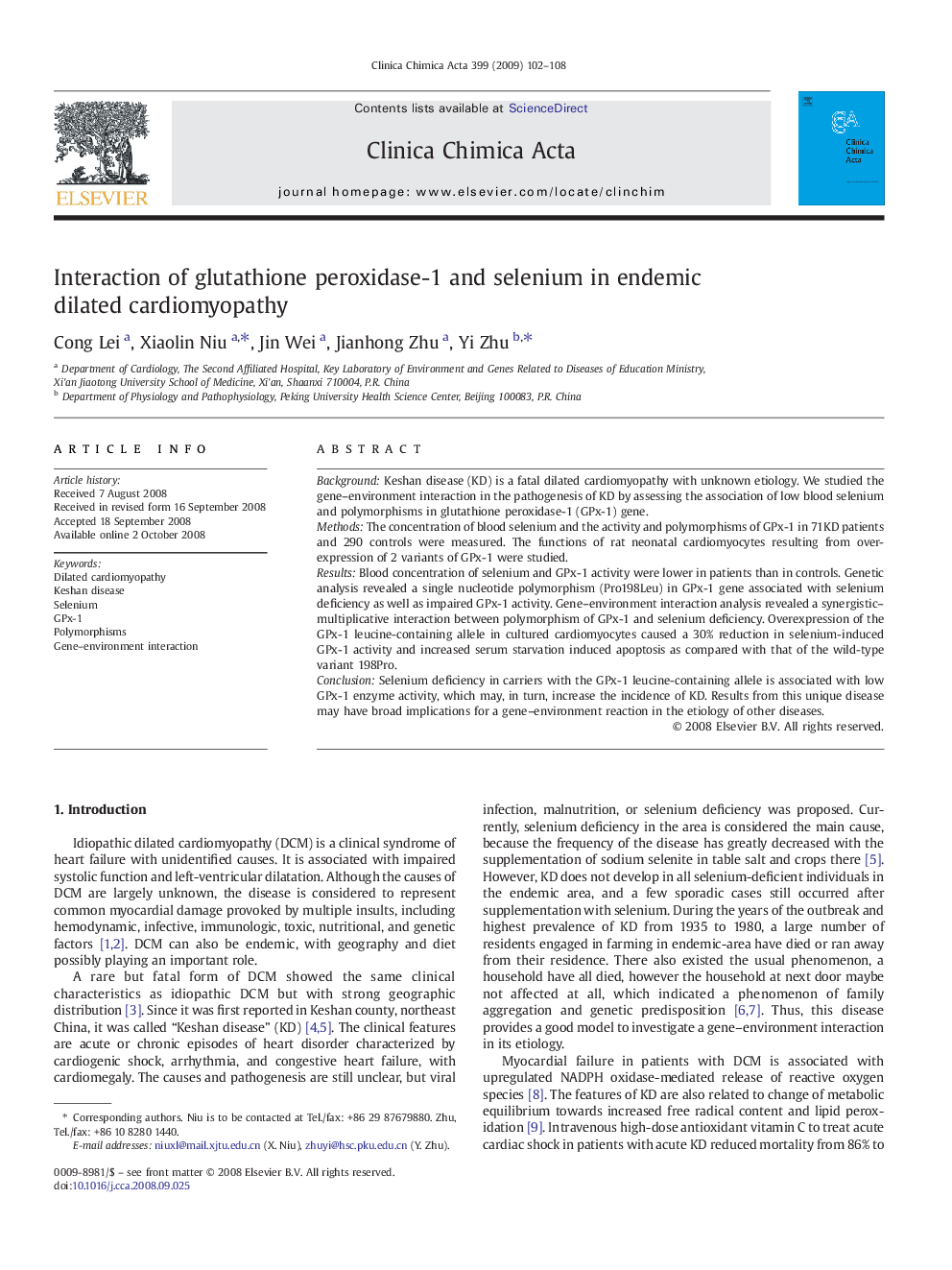| Article ID | Journal | Published Year | Pages | File Type |
|---|---|---|---|---|
| 1966819 | Clinica Chimica Acta | 2009 | 7 Pages |
BackgroundKeshan disease (KD) is a fatal dilated cardiomyopathy with unknown etiology. We studied the gene–environment interaction in the pathogenesis of KD by assessing the association of low blood selenium and polymorphisms in glutathione peroxidase-1 (GPx-1) gene.MethodsThe concentration of blood selenium and the activity and polymorphisms of GPx-1 in 71KD patients and 290 controls were measured. The functions of rat neonatal cardiomyocytes resulting from overexpression of 2 variants of GPx-1 were studied.ResultsBlood concentration of selenium and GPx-1 activity were lower in patients than in controls. Genetic analysis revealed a single nucleotide polymorphism (Pro198Leu) in GPx-1 gene associated with selenium deficiency as well as impaired GPx-1 activity. Gene–environment interaction analysis revealed a synergistic–multiplicative interaction between polymorphism of GPx-1 and selenium deficiency. Overexpression of the GPx-1 leucine-containing allele in cultured cardiomyocytes caused a 30% reduction in selenium-induced GPx-1 activity and increased serum starvation induced apoptosis as compared with that of the wild-type variant 198Pro.ConclusionSelenium deficiency in carriers with the GPx-1 leucine-containing allele is associated with low GPx-1 enzyme activity, which may, in turn, increase the incidence of KD. Results from this unique disease may have broad implications for a gene–environment reaction in the etiology of other diseases.
